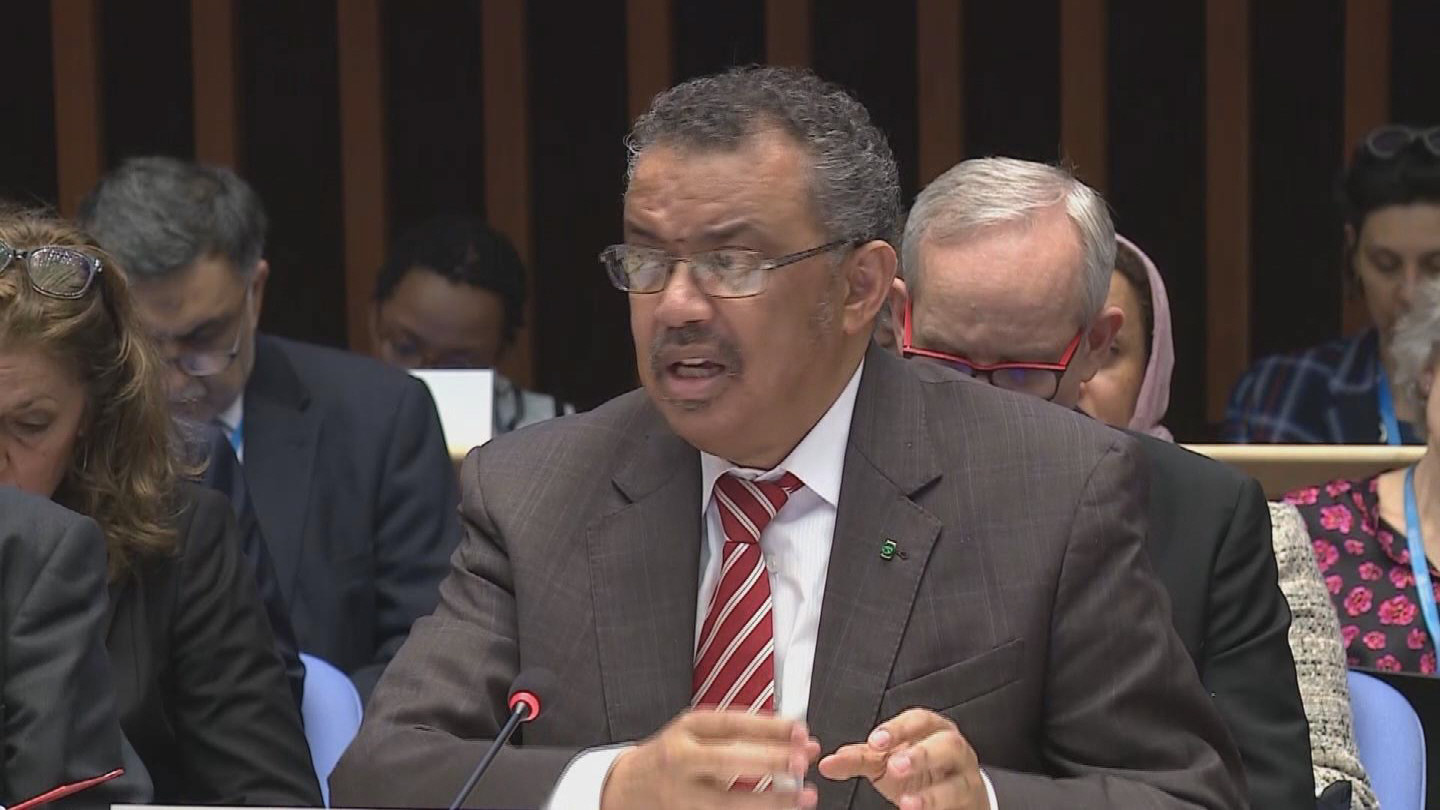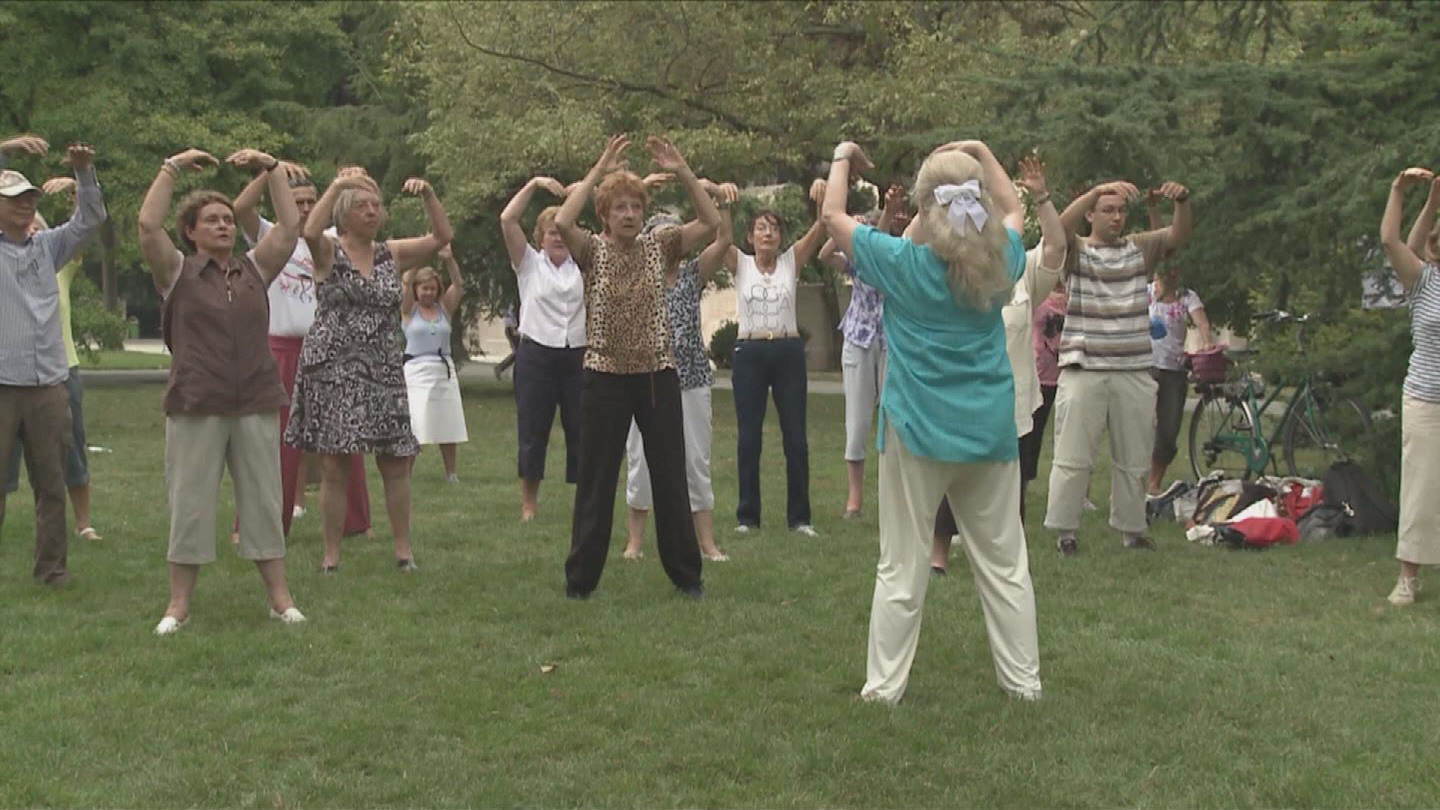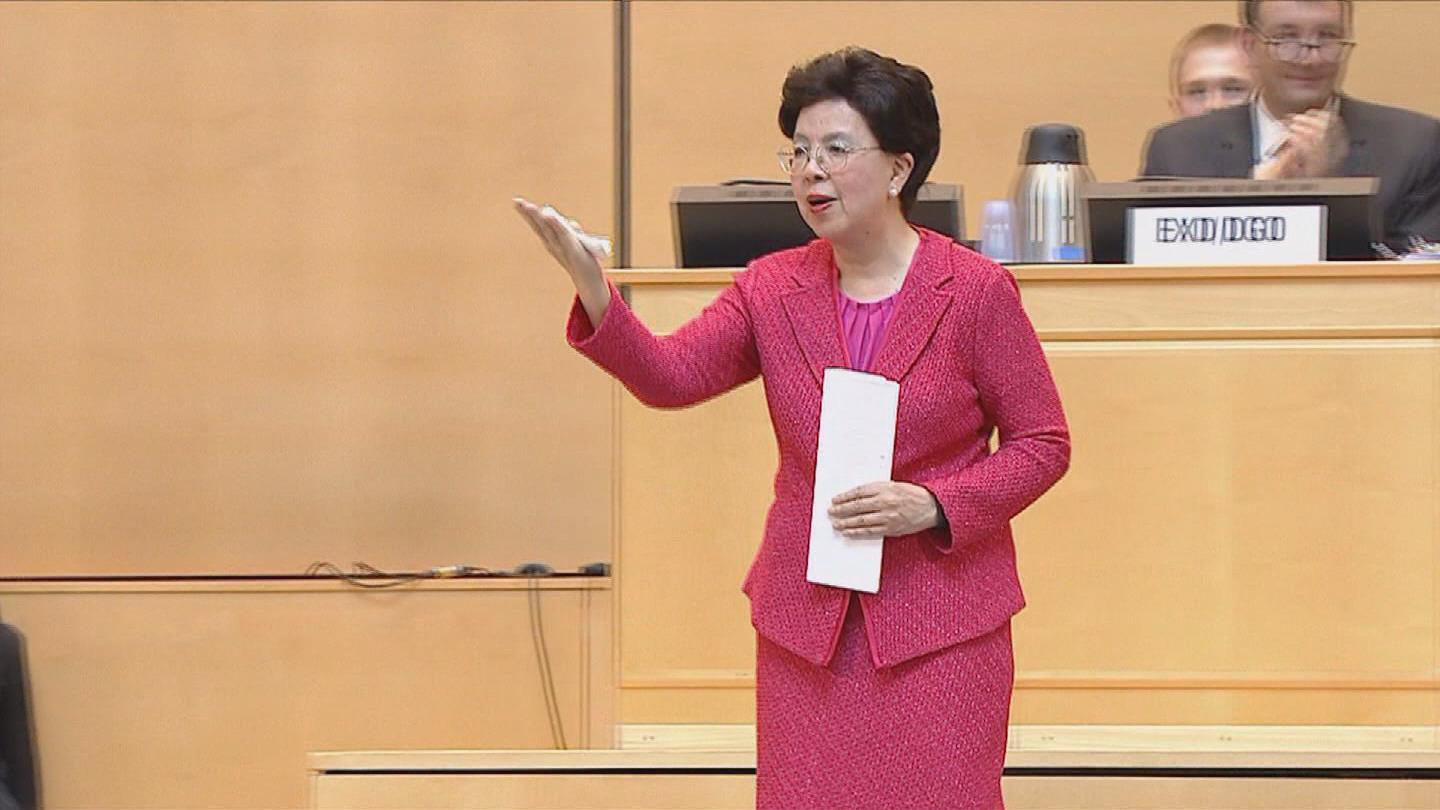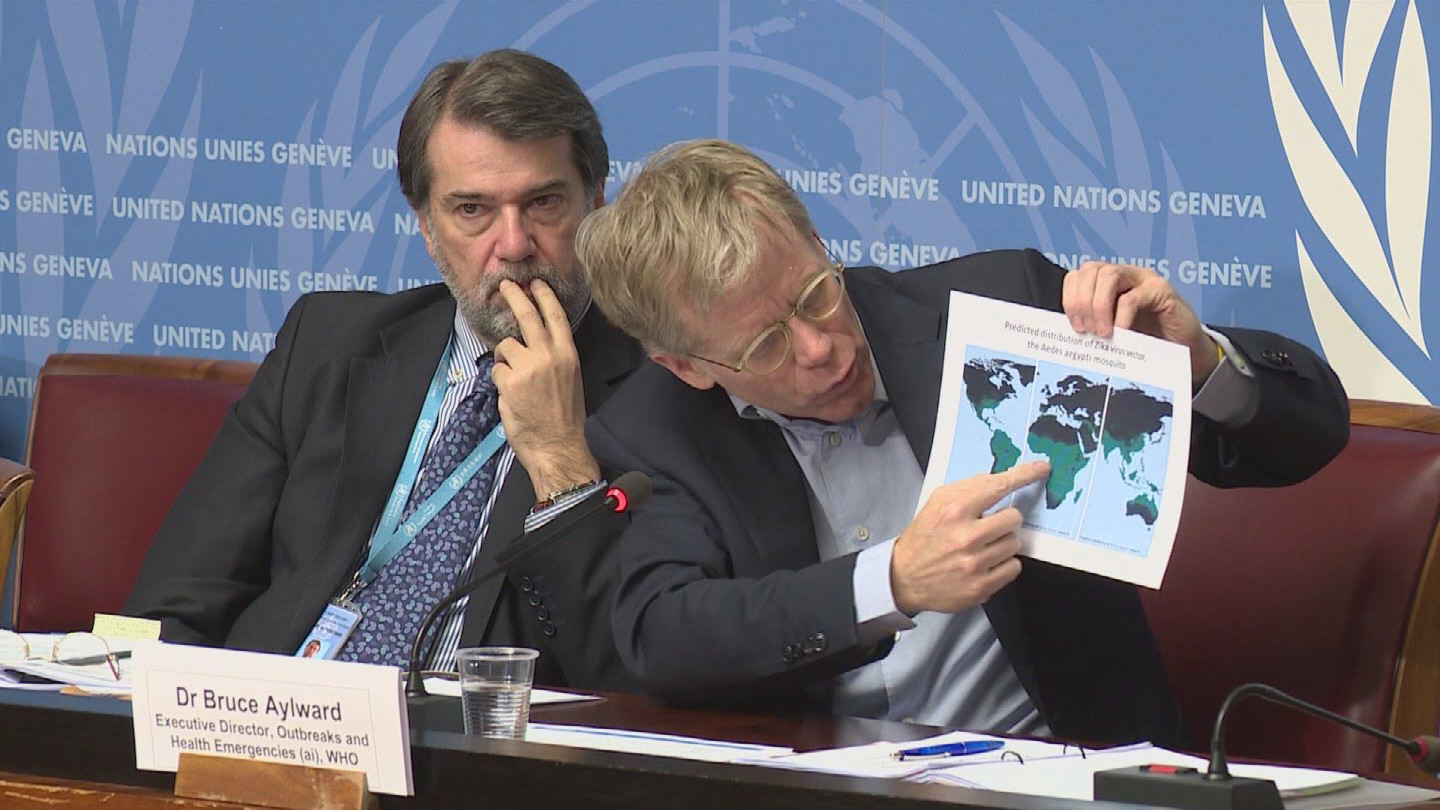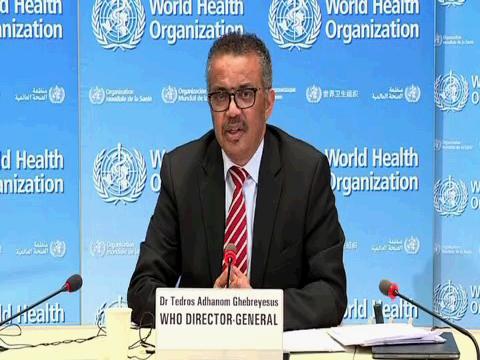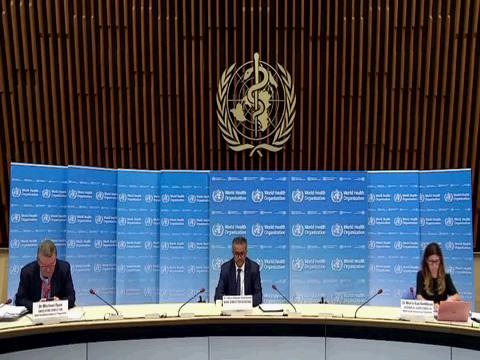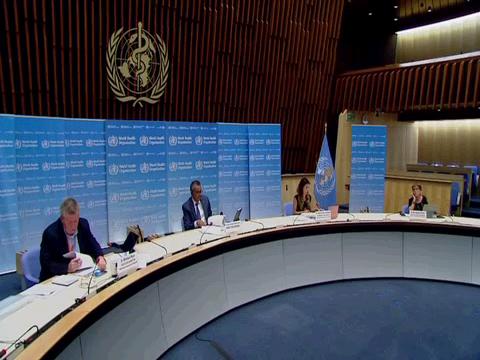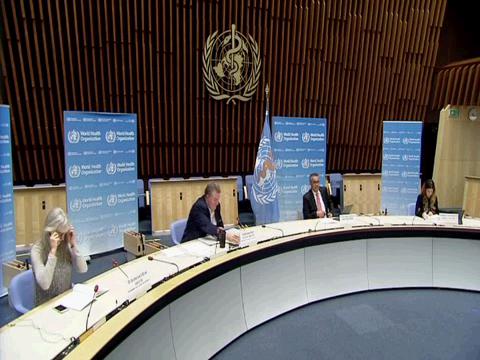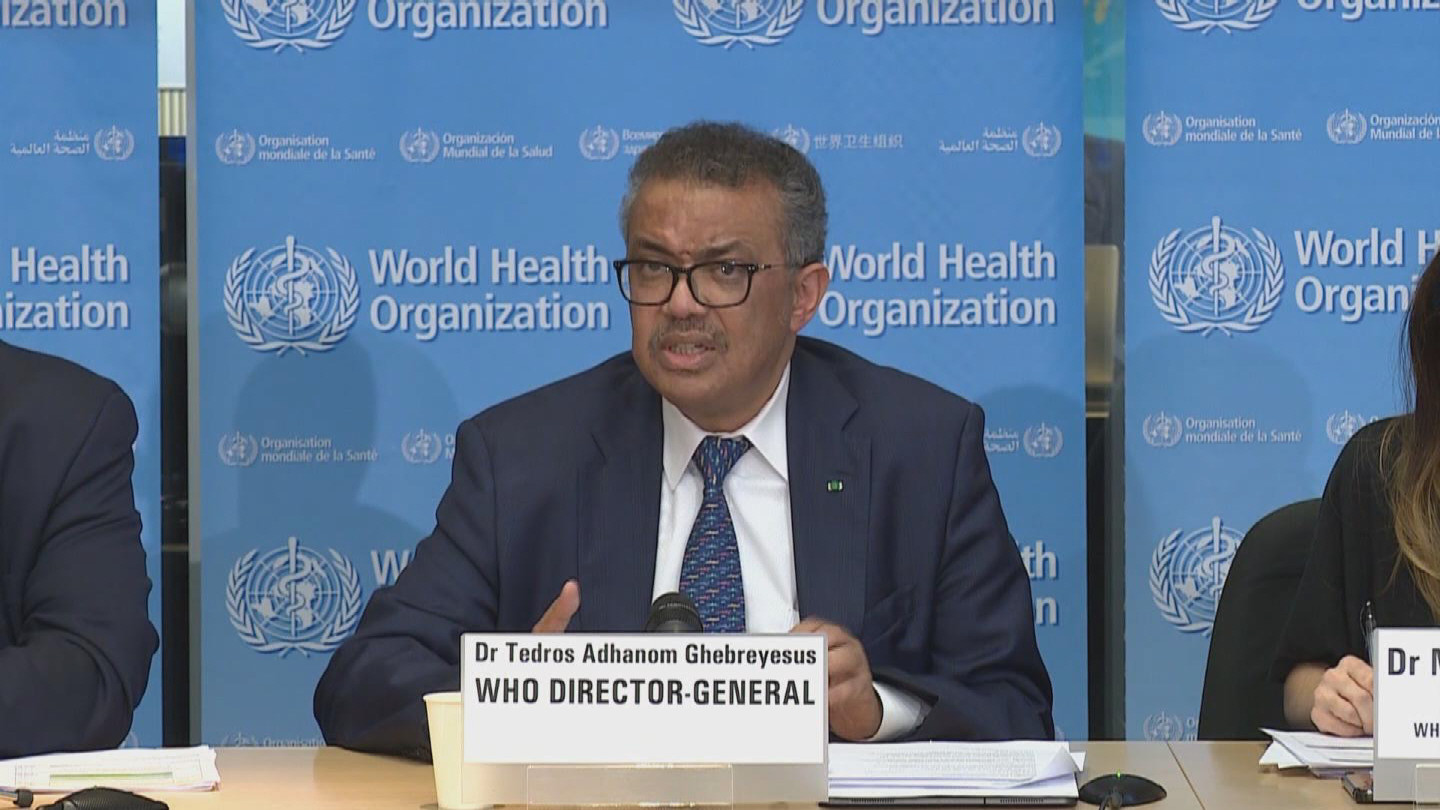WHO / PATHOGENS AIR TRANSMISSION REPORT
STORY: WHO / PATHOGENS AIR TRANSMISSION REPORT
TRT: 4:41
SOURCE: WHO
RESTRICTIONS: PLEASE CREDIT WHO ON SCREEN
LANGUAGE: ENGLISH / NATS
DATELINE: 15 AND 18 APRIL 2024, GENEVA, SWITZERLAND
18 APRIL 2024, GENEVA, SWITZERLAND
1. Various shots, exterior, WHO
15 APRIL 2024, GENEVA, SWITZERLAND
2.SOUNDBITE (English) Jeremy Farrar, Chief Scientist, World Health Organization (WHO):
“What it's trying to do is to bring what has been different communities of scientific experts together, instead of working in their own disciplines, try and bring nurses, public health epidemiologists, physicists, engineers all together to agree on a common set of terminology of words that we can all agree on, and then we can go forward and do the science that will guide how we then go about making sure that we can control pandemics, including Covid, but not limited to Covid.”
2. SOUNDBITE (English) Jeremy Farrar, Chief Scientist, World Health Organization (WHO):
“It's a hugely important first step. But next, we need to keep the disciplines, the experts together. We're using the same terminology, the same language, and now we need to do the science that provides the evidence on tuberculosis, on Covid and other respiratory pathogens, so that we know how to control those infections better than we have done in the past.”
3. SOUNDBITE (English) Jeremy Farrar, Chief Scientist, World Health Organization (WHO):
“And I think what this document does is bring the disciplines together and get common agreement. When I say ‘aerosol’, when I say ‘through the air’, it doesn't matter whether I'm an engineer, a clinician, a nurse, a public health person. We know we mean the same thing. Now the communities have got to stay together and work together, but also challenge each other. And that's the joy of working across disciplines.”
4. SOUNDBITE (English) Jeremy Farrar, Chief Scientist, World Health Organization (WHO):
“I wasn't here at the time, so I don't want to take credit for it. But I think what the visionary people who did set it up, thoughts as we came into the second year of Covid is we could all see that the different disciplines were describing things in different ways. People from all of those scientific expertise were using different languages, and therefore they were in some ways talking past each other rather than working together. And I think this document brings people together. All the 500 experts agree with this new terminology, and now we can move forward. And I hope those interfaces between disciplines now stay in place. I hope the funders fund that interdisciplinary work, because I think this is so important. And and also this isn't about Covid. This actually covers many, many respiratory infections that go through the air. And that is also, I think, historic.”
5. SOUNDBITE (English) Jeremy Farrar, Chief Scientist, World Health Organization (WHO):
“I was on the UK scientific advisory board called SAGE. We had exactly the same discussions there. And in January, in February, in March, in April of 2020, the certainty of the scientific evidence compared to six months later, a year later, now four years later, April 2024, is completely different, and what did we do? This was in the UK, and it's what I think people in WHO were doing in good faith was to say, what can we learn from previous knowledge, evidence and science from influenza, from SARS1, from MERS in the Middle East and other respiratory viruses? And what is our best advice on the available evidence at the time? In good faith. Now, over time, that scientific evidence changes, it evolves. And what do you do when science evolves? You have to change your advice. So I think what happened is totally understandable. Uh, we're in a totally different situation now, and our knowledge, based on everything related to Covid is completely different. And now the advice, of course, is different.
6. SOUNDBITE (English) Jeremy Farrar, Chief Scientist, World Health Organization (WHO):
“We're in an era of more frequent and more complex epidemics. The next one is an inevitability. There will be further. It won't look exactly like what we've done in the past, but we now have a scientific base on which to base better advice in the future. But just that advice will change, because if we face a new respiratory infection, it'll be different, and our advice and our science will have to evolve and then evolve into that new situation. So, science constantly evolves. I do think, the public, the community, if I talk to my brothers and sisters they understand that uncertainty sometimes better than I think sometimes I do, we do and I think they're better at putting that into their lives and their risk assessment as well.”
18 APRIL 2024, GENEVA, SWITZERLAND
7. Various shots, exterior, WHO
Following consultation with public health agencies and experts, the World Health Organization (WHO) publishes a global technical consultation report introducing updated terminology for pathogens that transmit through the air. The pathogens covered include those that cause respiratory infections, e.g. COVID-19, influenza, measles, Middle East respiratory syndrome (MERS), severe acute respiratory syndrome (SARS), and tuberculosis, among others.
The publication, entitled “Global technical consultation report on proposed terminology for pathogens that transmit through the air”, is the result of an extensive, multi-year, collaborative effort and reflects shared agreement on terminology between WHO, experts and four major public health agencies: Africa Centres for Disease Control and Prevention; Chinese Center for Disease Control and Prevention; European Centre for Disease Prevention and Control; and United States Centers for Disease Control and Prevention. This agreement underlines the collective commitment of public health agencies to move forward together on this matter.
The wide-ranging consultation was conducted in multiple steps in 2021-2023 and addressed a lack of common terminology to describe the transmission of pathogens through the air across scientific disciplines. The challenge became particularly evident during the COVID-19 pandemic as experts from various sectors were required to provide scientific and policy guidance. Varying terminologies highlighted gaps in common understanding and contributed to challenges in public communication and efforts to curb the transmission of the pathogen.
Together with a very diverse range of leading public health agencies and experts across multiple disciplines, we are pleased to have been able to address this complex and timely issue and reach a consensus,” said Dr Jeremy Farrar, WHO Chief Scientist. “The agreed terminology for pathogens that transmit through the air will help set a new path for research agendas and implementation of public health interventions to identify, communicate and respond to existing and new pathogens.”
The extensive consultation resulted in the introduction of the following common descriptors to characterize the transmission of pathogens through the air (under typical circumstances):
• Individuals infected with a respiratory pathogen can generate and expel infectious particles containing the pathogen, through their mouth or nose by breathing, talking, singing, spitting, coughing or sneezing. These particles should be described with the term ‘infectious respiratory particles’ or IRPs.
• IRPs exist on a continuous spectrum of sizes, and no single cut off points should be applied to distinguish smaller from larger particles. This facilitates moving away from the dichotomy of previously used terms: ‘aerosols’ (generally smaller particles) and ‘droplets’ (generally larger particles).
The descriptor ‘through the air’ can be used in a general way to characterize an infectious disease where the main mode of transmission involves the pathogen travelling through the air or being suspended in the air. Under the umbrella of ‘through the air transmission’, two descriptors can be used:
1. Airborne transmission or inhalation, for cases when IRPs are expelled into the air and inhaled by another person. Airborne transmission or inhalation can occur at a short or long distance from the infectious person and distance depends on various factors (airflow, humidity, temperature, ventilation etc). IRPs can theoretically enter the body at any point along the human respiratory tract, but preferred sites of entry may be pathogen-specific.
2. Direct deposition, for cases when IRPs are expelled into the air from an infectious person, and are then directly deposited on the exposed mouth, nose or eyes of another person nearby, then entering the human respiratory system and potentially causing infection.
“This global technical consultation process was a concerted effort of many influential and experienced experts,” said Dr Gagandeep Kang, Christian Medical College, Vellore, India who is a Co-Chair of the WHO Technical Working Group. “Reaching consensus on these terminologies bringing stakeholders in an unprecedented way was no small feat. Completing this consultation gives us a new opportunity and starting point to move forward with a better understanding and agreed principles for diseases that transmit through the air,” added Dr Yuguo Li from the University of Hong Kong, Hong Kong SAR (China), who also co-chaired the Technical Working Group.
This consultation was the first phase of global scientific discussions led by WHO. Next steps include further technical and multidisciplinary research and exploration of the wider implementation implications of the updated descriptors.
